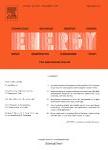版权所有:内蒙古大学图书馆 技术提供:维普资讯• 智图
内蒙古自治区呼和浩特市赛罕区大学西街235号 邮编: 010021

作者机构:Univ Lisbon Inst Super Tecn Ctr Marine Technol & Ocean Engn CENTEC Lisbon Portugal
出 版 物:《ENERGY》 (能)
年 卷 期:2019年第168卷
页 面:897-908页
核心收录:
学科分类:0820[工学-石油与天然气工程] 08[工学] 0807[工学-动力工程及工程热物理]
主 题:Marine diesel engine Four-stroke Exhaust emissions Nonlinear programming Optimization model Fuel economy
摘 要:A numerical optimization model is developed to simulate the performance of a large four-stroke marine turbocharged diesel engine along the entire operating range by finding the optimal value of the adjustable parameters: speed of the turbocharger, start angle of injection, intake valve timing and amount of injected fuel. This numerical model assists to find the optimal values of these different parameters together without performing any experimental trials for different engine speeds and loads by minimizing the fuel consumption and by verifying the exhaust emissions limitation. This model couples a nonlinear optimization procedure implemented in Matlab/Simulink and 1D engine simulation software. Firstly, the marine diesel engine model is established and calibrated using data from the manufacturer, and the nonlinear optimization model is constructed using the fitness function, static penalty functions and boundary conditions. The optimizer adopted showed a good computing performance even when running in normal computers. The model is used to calculate the BSFC and to compute the amount of CO2 and NOx emissions for different working conditions. The results are important because in marine diesel engines, the values of the parameters of the turbocharger, injection system and valves timings and thus the amount of BSFC, CO2 and NOx emissions are not provided by the manufacturer along the entire operating range, although these data are required in different marine applications either during the preliminary stage of ship design or to be used in ship routing code. This simulation environment based optimization scheme can be further used to compute the performance of any marine diesel engine and to be a part of a numeric model of the complete propulsion system. (C) 2018 Elsevier Ltd. All rights reserved.